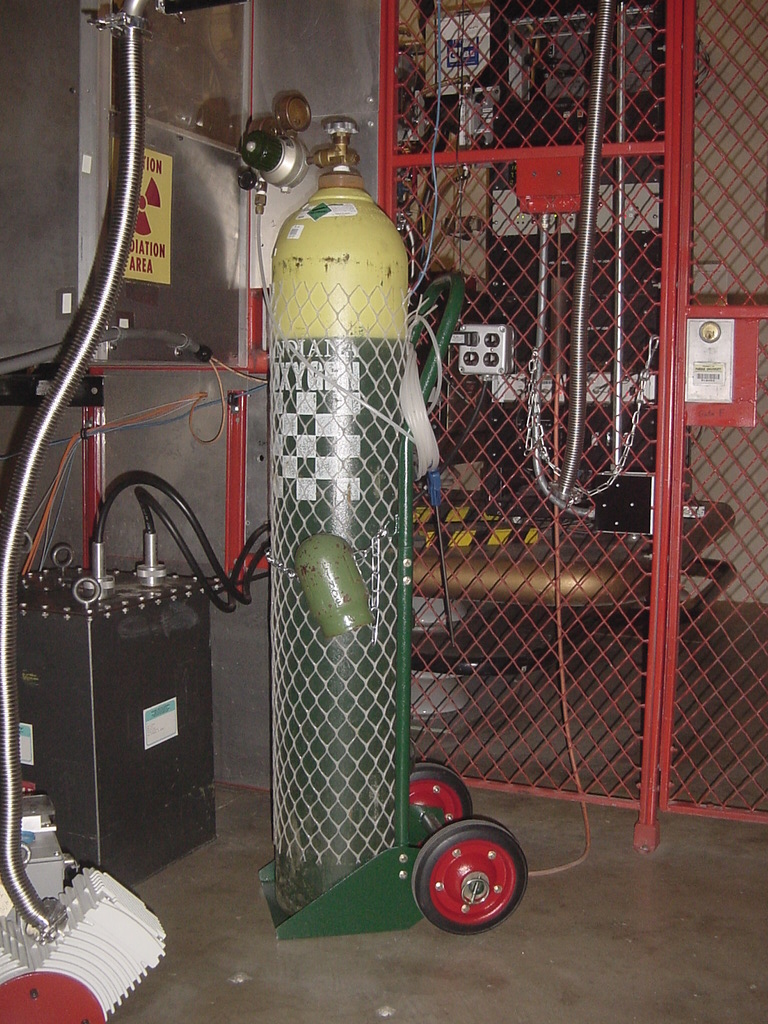|
Gas Use
Usage area should be:
- well ventilated
- arranged so as to minimize fire risk in the vicinity of the gas containers. It may
also be necessary to eliminate ignition sources, for example where flammable gases are
used for non-combustion applications and where there is a risk of leakage
- provided with appropriate safety and emergency equipment, e.g., fire extinguishers,
breathing apparatus, eye protection, etc. For a better understanding of the
usage/storage area check with the local fire code for compliance
SwageLok and similar fittings must be installed by competent personnel.
See Installers' Pocket Guide.
Compressed gas containers should be:

- standing upright (valve up, >45o from horizontal unless designed specially
for use in horizontal or inverted position).
- properly secured with approved cylinder support, individually if not capped. No
uncapped cylinder should be secured to a cart unless the cart is specifically designed for that purpose
(like oxy-acetylene torch carts).
- checked to contain the correct gas in the designated usage area and properly secured to
prevent falling over or other movement which could fracture the connecting pipework
- leak tested around the valve and valve outlet connection
- fitted ONLY with the appropriate compatible regulator -- no adaptors.
Personnel (all in the area) should be familiar with:
- the identification of the gas container contents and the potential hazards. They
should also have access to the appropriate Material Safety Data Sheets.
- the operation and use of the safety and emergency equipment where provided, e.g., fire
extinguishers, breathing apparatus, eye protection, ventilated gas cabinets, etc.
- the gas container and its valve, including the procedures for rectification of leakages
at the valve gland (where appropriate) and outlet connection.
- the correct operation of the gas flow and control equipment including purging procedures
- the importance of ensuring that the gas container is not contaminated by a backfeed from
the process
|





